2,6-Difluorobenzoyl chloride
- CAS NO.:18063-02-0
- Empirical Formula: C7H3ClF2O
- Molecular Weight: 176.55
- MDL number: MFCD00003238
- EINECS: 241-971-2
- SAFETY DATA SHEET (SDS)
- Update Date: 2023-04-23 13:52:06
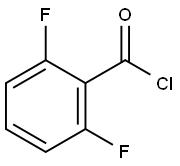
What is 2,6-Difluorobenzoyl chloride?
Chemical properties
CLEAR COLOURLESS TO LIGHT YELLOW LIQUID
The Uses of 2,6-Difluorobenzoyl chloride
2,6-Difluorobenzoyl chloride has been used in:
- the preparation of series of novel 2-aryl substituted 4H-3,1-benzoxazin-4-ones
- regioselective synthesis of 3,6-disubstituted-2-aminoimidazo[1,2-a]pyridine
- Friedel-Crafts acylation reaction of toluene, anisol, thioanisol, 4-phenoxyacetophenone and N,N-diacetyl-4-phenoxyaniline
The Uses of 2,6-Difluorobenzoyl chloride
Preservative, bactericide, furoates for perfume and flavoring, fumigant, textile processing, chemical intermediate.
Properties of 2,6-Difluorobenzoyl chloride
| Melting point: | 128-132 °C(lit.) |
| Boiling point: | 72-77 °C/13 mmHg (lit.) |
| Density | 1.404 g/mL at 25 °C (lit.) |
| refractive index | n |
| Flash point: | 121 °F |
| storage temp. | Inert atmosphere,Room Temperature |
| form | clear liquid |
| Specific Gravity | 1.404 |
| color | Colorless to Light orange to Yellow |
| Water Solubility | REACTS |
| Sensitive | Moisture Sensitive |
| BRN | 639438 |
| CAS DataBase Reference | 18063-02-0(CAS DataBase Reference) |
| NIST Chemistry Reference | 2,6-Difluorobenzoyl chloride(18063-02-0) |
Safety information for 2,6-Difluorobenzoyl chloride
| Signal word | Danger |
| Pictogram(s) |
 Flame Flammables GHS02  Corrosion Corrosives GHS05 |
| GHS Hazard Statements |
H226:Flammable liquids H314:Skin corrosion/irritation |
| Precautionary Statement Codes |
P210:Keep away from heat/sparks/open flames/hot surfaces. — No smoking. P233:Keep container tightly closed. P240:Ground/bond container and receiving equipment. P280:Wear protective gloves/protective clothing/eye protection/face protection. P303+P361+P353:IF ON SKIN (or hair): Remove/Take off Immediately all contaminated clothing. Rinse SKIN with water/shower. P305+P351+P338:IF IN EYES: Rinse cautiously with water for several minutes. Remove contact lenses, if present and easy to do. Continuerinsing. |
Computed Descriptors for 2,6-Difluorobenzoyl chloride
New Products
Tert-butyl bis(2-chloroethyl)carbamate (S)-3-Aminobutanenitrile hydrochloride N-Boc-D-alaninol N-BOC-D/L-ALANINOL 3-(2,4-Dimethoxybenzyl)dihydropyrimidine-2,4(1H,3H)-dione 7-Bromo-1H-indazole N-octanoyl benzotriazole 3,4-Dibenzyloxybenzaldehyde 4-Hydrazinobenzoic acid Electrolytic Iron Powder Fmoc-Val-Cit-PAB 1,1’-CARBONYLDIIMIDAZOLE R-2-BENZYLOXY PROPIONIC ACID 4-HYDROXY BENZYL ALCOHOL 1,1’-CARBONYLDI (1,2-4 TRIAZOLE) S-2-CHLORO PROPIONIC ACID (2-Hydroxyphenyl)acetonitrile 4-Bromopyrazole 5-BROMO-2CYANO PYRIDINE 5,6-Dimethoxyindanone 5-broMo-2-chloro-N-cyclopentylpyriMidin-4-aMine 1-(4-Methylphenylsulfonyl)-1H-1,2,3-benzotriazole 1-(2-Chlorobenzyl)-4-nitro-1H-pyrazole 1-(2-Nitrophenyl)-4-phenylpiperazineRelated products of tetrahydrofuran
![5-[(4-FORMYLPHENOXY)METHYL]-2-FUROIC ACID](https://img.chemicalbook.in/StructureFile/ChemBookStructure8/GIF/CB5330768.gif)
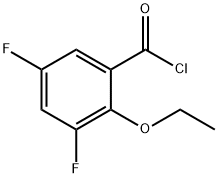
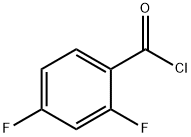


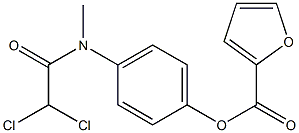
![5-[(4-ACETYL-2-METHOXYPHENOXY)METHYL]-2-FUROIC ACID](https://img.chemicalbook.in/StructureFile/ChemBookStructure8/GIF/CB1192926.gif)
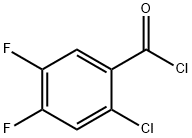
You may like
-
 2,6-Difluorobenzoyl Chloride CAS 18063-02-0View Details
2,6-Difluorobenzoyl Chloride CAS 18063-02-0View Details
18063-02-0 -
 2,6-Difluorobenzoyl chloride, 98% CAS 18063-02-0View Details
2,6-Difluorobenzoyl chloride, 98% CAS 18063-02-0View Details
18063-02-0 -
 Ste-Glu-AEEA-AEEA-OSUView Details
Ste-Glu-AEEA-AEEA-OSUView Details
1169630-40-3 -
 1446013-08-6 Fmoc-His-Aib-OH TFA 98%View Details
1446013-08-6 Fmoc-His-Aib-OH TFA 98%View Details
1446013-08-6 -
 127464-43-1 99%View Details
127464-43-1 99%View Details
127464-43-1 -
 Chloro Uracil 99%View Details
Chloro Uracil 99%View Details
1820-81-1 -
 2-ETHYLPYRIDINE 100-71-0 99%View Details
2-ETHYLPYRIDINE 100-71-0 99%View Details
100-71-0 -
 13162-05-5 99%View Details
13162-05-5 99%View Details
13162-05-5
Statement: All products displayed on this website are only used for non medical purposes such as industrial applications or scientific research, and cannot be used for clinical diagnosis or treatment of humans or animals. They are not medicinal or edible.